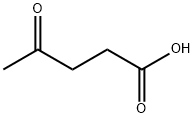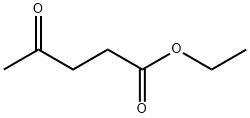Levulinic acid
- CAS No.
- 123-76-2
- Chemical Name:
- Levulinic acid
- Synonyms
- LA;4-OXOPENTANOIC ACID;levulinic;LEVA;Laevulinic acid;4-OXOVALERIC ACID;2-KETOVALERIC ACID;PENTANOIC ACID, 4-OXO;levulic acid;Acetylpropionic acid
- CBNumber:
- CB3213533
- Molecular Formula:
- C5H8O3
- Molecular Weight:
- 116.12
- MDL Number:
- MFCD00002796
- MOL File:
- 123-76-2.mol
- MSDS File:
- SDS
| Melting point | 30-33 °C (lit.) |
|---|---|
| Boiling point | 245-246 °C (lit.) |
| Density | 1.134 g/mL at 25 °C (lit.) |
| vapor pressure | 1 mm Hg ( 102 °C) |
| refractive index |
n |
| FEMA | 2627 | LEVULINIC ACID |
| Flash point | 280 °F |
| storage temp. | Store below +30°C. |
| solubility | 675g/l |
| form | Liquid After Melting |
| pka | pKa 4.65(H2O,t = 25,c=0.03-0.001) (Uncertain) |
| color | Clear yellow |
| Odor | at 100.00 %. sweet caramel acidic acetoin buttery |
| Odor Type | caramellic |
| biological source | synthetic |
| Water Solubility | Soluble in water ( 675g/L at 20°C). |
| Sensitive | Light Sensitive |
| Merck | 14,5472 |
| JECFA Number | 606 |
| BRN | 506796 |
| InChIKey | JOOXCMJARBKPKM-UHFFFAOYSA-N |
| LogP | -0.498 |
| Substances Added to Food (formerly EAFUS) | LEVULINIC ACID |
| FDA 21 CFR | 172.515 |
| CAS DataBase Reference | 123-76-2(CAS DataBase Reference) |
| EWG's Food Scores | 1 |
| FDA UNII | RYX5QG61EI |
| NIST Chemistry Reference | Pentanoic acid, 4-oxo-(123-76-2) |
| EPA Substance Registry System | Levulinic acid (123-76-2) |
| UNSPSC Code | 85151701 |
| NACRES | NA.24 |
SAFETY
Risk and Safety Statements
| Symbol(GHS) |   GHS05,GHS07 |
|||||||||
|---|---|---|---|---|---|---|---|---|---|---|
| Signal word | Danger | |||||||||
| Hazard statements | H302-H317-H318 | |||||||||
| Precautionary statements | P261-P264-P280-P301+P312-P302+P352-P305+P351+P338 | |||||||||
| Hazard Codes | Xn,C | |||||||||
| Risk Statements | 22-36/37/38-34-R34-R22 | |||||||||
| Safety Statements | 26-45-36/37/39-S45-S36/37/39-S26 | |||||||||
| RIDADR | 3261 | |||||||||
| WGK Germany | 3 | |||||||||
| RTECS | OI1575000 | |||||||||
| TSCA | Yes | |||||||||
| HazardClass | 8 | |||||||||
| PackingGroup | III | |||||||||
| HS Code | 29183000 | |||||||||
| Toxicity | LD50 orally in Rabbit: 1850 mg/kg LD50 dermal Rabbit > 5000 mg/kg | |||||||||
| NFPA 704 |
|
Levulinic acid price More Price(42)
| Manufacturer | Product number | Product description | CAS number | Packaging | Price | Updated | Buy |
|---|---|---|---|---|---|---|---|
| Sigma-Aldrich | W262706 | Levulinic Acid ≥97%, FG | 123-76-2 | 1kg | $76.4 | 2024-03-01 | Buy |
| Sigma-Aldrich | W262706 | Levulinic Acid ≥97%, FG | 123-76-2 | 5kg | $258 | 2024-03-01 | Buy |
| Sigma-Aldrich | W262706 | Levulinic Acid ≥97%, FG | 123-76-2 | 10Kg | $307 | 2024-03-01 | Buy |
| Sigma-Aldrich | W262706 | Levulinic Acid ≥97%, FG | 123-76-2 | 25kg | $589 | 2024-03-01 | Buy |
| Sigma-Aldrich | W262701 | Levulinic Acid natural, 99%, FG | 123-76-2 | 100g | $60.9 | 2024-03-01 | Buy |
Levulinic acid Chemical Properties,Uses,Production
Chemical Properties
White flake crystals, hygroscopic. clear yellowish liquid after melting.It is easily soluble in water and alcohol, ether organic solvents.
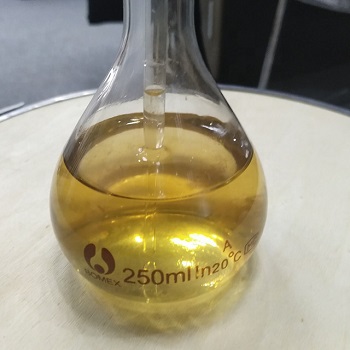
Levulinic acid conventionally is derived from refined petroleum but technological advances now permit the production of levulinic acid from biomass. Suitable feedstocks from the forest industry include pulp and paper mill residues, sawmill and logging residues, and solid municipal waste. It takes approximately 2 kg of cellulose to produce 1 kg of levulinic acid (US Department of Energy 1998). Obtaining enough raw materials to support the production of levulinic acid from biomass is not a foreseeable concern; Canada currently produces over 75 million tonnes of logging residues annually which, in turn, could produce 19 million tonnes of levulinic acid.
Uses
Levulinic acid is a biomass product and its derivatives, such as ethyl levulinate and alkyl levulinate, can be used as fuel additives.
levulinic acid is used for calcium levulinate in pharmaceuticals, as esters in solvents and plasticizers, and for making valerolactone. As its uses expand, it will probably be made from cellulosic wastes. Mesitonic acid, a homolog of levulinic acid is obtained by boiing mesityl oxide with KCN.
Hydrogenation of levulinic acid can produce other useful chemicals. Valeric-g-lactone, which is an effective solvent with extensive uses, can be obtained in very high yields. This compound may be hydrogenated to 1,4-pentandiol, which upon dehydration yields 1,3-pentadine (piperylene). Piperylene is known to polymerize to a rubbery mass and is therefore a source of synthetic rubber (Ghorpade and Hanna 1997).
Levulinic acid is a precursor for the synthesis of useful intermediates such as γ-valerolactone, ethyl levulinate, pentanoic acid and 2-methyl-tetrahydrofuran. Derivatization and esterification of levulinic acid results in potential biofuels.
It can also be used in:
The preparation of catalytic composite to synthesize 5-hydroxymethylfurfural and furfural.
The synthesis of a commercial fragrance, fraistone.
The synthesis of pyrrolidone derivatives via reductive amination.
The total synthesis of mycobacterial arabinogalactan.
Application
It can be used as the raw materials of medicine, spices and paint, and used as solvent.
This product has wide applications. Levulinic acid can be used as both a carboxylic acid and can also be used as a ketone for reaction for making various kinds of products through esterification, halogenation, hydrogenation, oxidation dehydrogenation, condensation, etc., including resins, pharmaceuticals, spices, solvents, rubber and plastic additives, lubricants additives, surfactants and so on. In the pharmaceutical industry, its calcium salt (calcium fructose) can be used for intravenous injection. As a nutritional medicine, it helps to boost the formation of bone and maintain the normal excitability of nerves and muscles. It can also used for the production of indomethacin and plant hormones. Levulinic acid manufactured bisphenol acid can be made of water-soluble resin, used in the paper industry to produce filter paper. Levulinic acid is also an intermediate of pesticides and dyes.
Used for biochemical reagents, but also for organic synthesis
It can be used as an important chemical raw material or solvents. It can be used for the manufacturing of medicine (intravenous injection, indomethacin, etc.), resin (bisphenol acid water-soluble resin), spices (spices or tobacco spices), paint, paint, pesticides, and surfactants.
It can be used for biochemical research; manufacturing of esters and drugs. It is also the inhibitor of chlorophyll synthesis.
Preparation
The residue during the manufacturing of furfural with cotton seed shell or corncob sugar (furfural residue) or waste taro residue, through pressured hydrolysis with dilute acid, can be used to produce levulinic acid. The furfural residue was added to 10% dilute hydrochloric acid, the solidified solution was 1: 1.75, mixed and put into the hydrolysis pot, steamed at a pressure of 0.2MPa for 8-10 h. The diluted solution is then filtered and concentrated to a concentration of about 50%. It is further subject to vacuum distillation for collecting the fraction above 130 ℃ (2.67kPa) to obtain the finished product. Raw material consumption quota: potato tacar 7,000 kg/t, hydrochloric acid (fold 100%) 1800kg/t. Another method is manufacturing through the rearrangement and hydrolysis of sugar alcohol.
4% hydrochloric acid solution was added to the reaction pot, stir and heat to 97-100 ℃, slowly add the mixture of furfuryl alcohol, ethanol and water. After addition, stir 30 min. The filtrate was concentrated at 80 ° C (21.3 kPa) under reduced pressure to give crude levulinic acid. Then apply vacuum distillation, collect the fraction of 160-170 ° C (2.67kPa), and then re-distill once, to obtain the refined levulinic acid with the yield of about 75%.
Content analysis
Accurately weigh about 1.0 g of the sample, and put it into a 250ml Erlenmeyer flask containing 75~100ml water, add phenolphthalein test solution; apply 0.5 mol/L sodium hydroxide for titration to until it began to appear pink and maintain 15 s. Each mL of 0.5mol/L sodium hydroxide solution is equivalent to 58.08mg of the goods.
Toxicity
GRAS (FEMA).
Usage limit
FEMA (mg/kg): Beverage, cold drink, 14.0; Candy, baked goods, 53.0; Gelatin, pudding, 4.0.
FDA, §172.515 (2000): take proper amount as limit.
Description
Levulinic acid has a tart, whiskey taste. It may be synthesized by the action of more or less concentrated HCL on sucrose, glucose, or fructose; hence, its reported presence in caramels.
Chemical Properties
Levulinic acid has a tart, whiskey taste.
Physical properties
Levulinic acid forms colorless crystals that are readily soluble in water, ethanol, and diethyl ether.
Occurrence
Reported found in papaya, wheat bread, rice, sake and Chinese quince.
Uses
Levulinic acid may be used as an analytical reference standard for the quantification of the analyte in the following:
Soy sauce using liquid chromatography coupled to mass spectrometry (LC–MS).
Liquid food samples using gas chromatography with flame ionization detection (GC-FID).
Uses
Replenisher (calcium).
Uses
Levulinic acid is a precursor for the synthesis of useful intermediates such as γ-valerolactone, ethyl levulinate, pentanoic acid and 2-methyl-tetrahydrofuran. Derivatization and esterification of levulinic acid results in potential biofuels.
It can also be used in:
The preparation of catalytic composite to synthesize 5-hydroxymethylfurfural and furfural.
The synthesis of a commercial fragrance, fraistone.
The synthesis of pyrrolidone derivatives via reductive amination.
The total synthesis of mycobacterial arabinogalactan.
Preparation
By action of more or less concentrated HCl on sucrose, glucose or fructose; hence, its reported presence in caramels.
Definition
ChEBI: 4-oxopentanoic acid is an oxopentanoic acid with the oxo group in the 4-position. It has a role as a plant metabolite. It is a straight-chain saturated fatty acid and an oxopentanoic acid. It is a conjugate acid of a 4-oxopentanoate.
Taste threshold values
Taste characteristics at 70 ppm: acidic, sweet, creamy and slight dairy.
Synthesis Reference(s)
Tetrahedron Letters, 30, p. 5329, 1989 DOI: 10.1016/S0040-4039(01)93778-5
General Description
Levulinic acid, an organic acid, is mainly used as a cigarette additive.
Levulinic acid Preparation Products And Raw materials
Raw materials
Preparation Products
1of4
| Supplier | Tel | Country | ProdList | Advantage | |
|---|---|---|---|---|---|
| Langfang Hawk Techology & Development Co, Ltd. | +86-0316-2224727,2224728,2224729 +86-18631652130 | 38755326@qq.com | China | 23 | 58 |
| Jinan Finer Chemical Co., Ltd | +86-531-88989536 +86-15508631887 | sales@finerchem.com | China | 2958 | 58 |
| Hebei Weibang Biotechnology Co., Ltd | +8615531157085 | abby@weibangbio.com | China | 8804 | 58 |
| Hebei Mujin Biotechnology Co.,Ltd | +86 13288715578 +8613288715578 | sales@hbmojin.com | China | 12830 | 58 |
| Hebei Yanxi Chemical Co., Ltd. | +8617531153977 | allison@yan-xi.com | China | 5855 | 58 |
| Hebei Chuanghai Biotechnology Co,.LTD | +86-13131129325 | sales1@chuanghaibio.com | China | 5887 | 58 |
| Hebei Kingfiner Technology Development Co.Ltd | +86-15532196582 +86-15373005021 | lisa@kingfinertech.com | China | 3007 | 58 |
| Henan Fengda Chemical Co., Ltd | +86-371-86557731 +86-13613820652 | info@fdachem.com | China | 20262 | 58 |
| hebei hongtan Biotechnology Co., Ltd | +86-86-1913198-3935 +8617331935328 | sales03@chemcn.cn | China | 970 | 58 |
| Hebei Zhuanglai Chemical Trading Co.,Ltd | +8613343047651 | admin@zlchemi.com | China | 3692 | 58 |
Related articles
- Levulinic Acid: The Versatile Compound Revolutionizing Chemistry
- Levulinic acid is poised to play an increasingly pivotal role in shaping the future of chemistry and beyond.
- May 9,2024
- Levulinic acid: properties, applications and safety
- Levulinic acid is a versatile compound with several notable properties. However, it requires safety precautions due to its pot....
- Dec 19,2023
- Levulinic acid: synthesis and applications in drug synthesis
- Levulinic acid is derived from glucose or fructose, and it has multiple uses in drug synthesis and as a chemical modifier.
- Jun 29,2023
View Lastest Price from Levulinic acid manufacturers
| Image | Update time | Product | Price | Min. Order | Purity | Supply Ability | Manufacturer | |
|---|---|---|---|---|---|---|---|---|
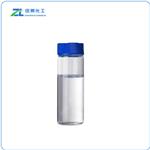 |
2025-02-14 | Levulinic acid
123-76-2
|
US $50.00 / kg | 1kg | 99% | 5000kg/Month | Hebei Zhuanglai Chemical Trading Co.,Ltd | |
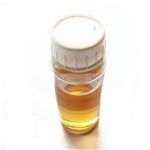 |
2025-02-14 | Levulinic acid
123-76-2
|
US $0.00 / KG | 1KG | 99% | 50000KG/month | Hebei Mujin Biotechnology Co.,Ltd | |
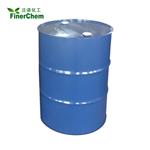 |
2025-02-14 | Levulinic acid
123-76-2
|
US $5.00 / KG | 1KG | ≥99% | 2000mt/year | Jinan Finer Chemical Co., Ltd |
-

- Levulinic acid
123-76-2
- US $50.00 / kg
- 99%
- Hebei Zhuanglai Chemical Trading Co.,Ltd
-

- Levulinic acid
123-76-2
- US $0.00 / KG
- 99%
- Hebei Mujin Biotechnology Co.,Ltd
-

- Levulinic acid
123-76-2
- US $5.00 / KG
- ≥99%
- Jinan Finer Chemical Co., Ltd
123-76-2(Levulinic acid)Related Search:
1of4





